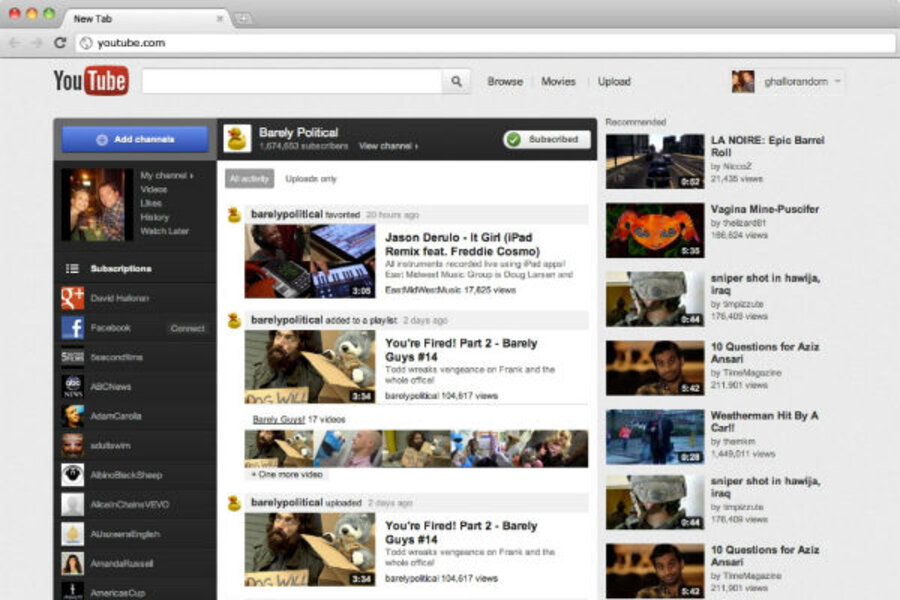YouTube: Eight years in and 1 billion people strong
Loading...
YouTube has reached one billion monthly users, crossing the threshold a mere five months after Facebook.
The now Google-owned company announced the achievement at a press event and on its blog on Wednesday. So what does this mean? According to YouTube, one billion users means that “nearly one out of every two people on the Internet visits YouTube” and it doesn’t stop there.
The numbers
The official blog goes on to explain that YouTube’s monthly viewership is the same as roughly 10 Super Bowl audiences. It also claims that if YouTube were a country, it would be the third biggest country in the world – surpassed only by China and India. Or, as YouTube so quaintly put it, one billion users would mean that Madonna and Psy would have to perform Gangnam Style for a packed audience 200,000 times.
According to YouTube’s statistics page, 72 hours of video are uploaded each minute and over 4 billion hours of video are watched each month. Some 70 percent of that traffic comes from outside of the US. YouTube is localized in 53 countries and comes in 61 languages.
Alexa.com, which tracks website popularity, ranks YouTube as the third most popular site in the world behind Google and Facebook, respectively.
The competition
It’s not surprising to see YouTube ranked near Google and Facebook but what about the other sites? Alexa ranked Yahoo in the fourth spot and Baidu.com, a Chinese-language search engine, nabbed number five.
So where did other popular sites land? Wikipedia swept up the sixth spot and retail giant, Amazon, sits at number nine.
The little bluebird of the Internet, Twitter, comes in at number 11.
Then and now
YouTube, which began back in 2005, quickly rose to global success. The website was started by three ex-Paypal employees who saw an opening in the market. By November 2006, the company had reached such fame and success that Google bought it for $1.65 billion.
What started off as a small start-up company has blossomed into a giant subsidiary of Google. In fact, YouTube's success has played a part in the decline of television viewership.
“To appreciate how important YouTube is, it’s worth knowing the Television Bureau of Advertising reported that total ad spend last year was $74 billion, “ writes Forbes contributor Mike Rogowsky. “And a lot of that money went to television networks whose audience is disappearing in the click of a mouse or the tap of an app.”
The same Forbes article explains the drastic the drop in TV viewers. According to Mr. Rogowsky, "It wasn’t that long ago that a show could become big and find an audience of nearly 20 million regulars (think early Grey’s Anatomy). Now, something like NBC’s Revolution is considered successful with less than half that."
What’s next
While Google's plans for YouTube's future are still a mystery, a small glimpse may have already been released.
“YouTube confirmed early this year that its evolution as an Internet stage for video may include subscriptions to content that creators expect people would pay to watch,” writes the AFP.
For YouTube, the road to fortune is paved in cat videos, music, professional content, and more importantly, the people in front of the computer screen.
For more tech news, follow Aimee on Twitter, @aimee_ortiz






